No products in the cart.
Great news! The Canada Post strike is over! We’re resuming deliveries to Canada!
Excellente nouvelle ! La grève de Postes Canada est terminée ! Nous reprenons les livraisons vers le Canada !
Great news! The Canada Post strike is over! We’re resuming deliveries to Canada!
Excellente nouvelle ! La grève de Postes Canada est terminée ! Nous reprenons les livraisons vers le Canada !
[category_image]
Nebutamol inhalation solution 1 mg/ml in polymer containers of 2 ml, 10 pcs.
$21.76
Nebutamol: indications, dosage, inhalation use, contraindications, side effects, and important precautions for safe respiratory treatment.
Categories: Cold and flu
Brand: Yuria-Pharm
Pharmacological properties
Pharmacodynamics. Salbutamol is a selective β2-adrenoceptor agonist. In therapeutic doses, it acts on the β2-adrenoceptors of bronchial muscles with minimal or complete lack of action on the β1-adrenoceptors of the heart.
Pharmacokinetics After inhalation, 10 to 20% of the administered dose reaches the lower respiratory tract. The remainder remains in the transport system or in the oropharynx, from where it is swallowed. Part of the dose that reaches the respiratory tract is absorbed into the lung tissue and enters the bloodstream, but is not metabolized in the lungs.
The onset of action of the drug occurs 4-5 minutes after inhalation, the duration of action is 4-6 hours.
After entering the systemic bloodstream, the drug is metabolized in the liver and excreted mainly by the kidneys in unchanged form and as a phenol sulfate metabolite.
The dose of the drug that enters the digestive system from the nasopharynx is absorbed in the gastrointestinal tract, undergoes the first stage of metabolism in the liver to the phenol sulfate compound, and is then excreted by the kidneys.
Indication
The drug is indicated for the relief of asthma attacks, as well as for the treatment of patients with COPD.
Application
The drug nebutamol is intended for inhalation use by inhalation through the mouth using a nebulizer and is used under the supervision of a physician.
Do not inject the solution or swallow it.
Adults (including elderly patients)
The usual starting dose of salbutamol by inhalation is 2-2.5 mg. It can be increased to 4-5 mg. Inhalation can be repeated 4 times a day.
For the treatment of adult patients with severe airway obstruction, the dose may be increased to 40 mg/day, however, such treatment should be carried out in a hospital setting under the supervision of a physician.
children
The usual starting dose of salbutamol by inhalation is 2-2.5 mg. It can be increased to 4-5 mg. Inhalation can be repeated 4 times a day.
The clinical efficacy of nebulized salbutamol in children under 18 months of age has not been established.
Since transient hypoxemia is possible, the need for supplemental oxygen therapy should be considered.
Nebutamol is usually administered undiluted. However, if inhalation is required for a prolonged period (10 minutes), the contents of the container may be diluted with sterile saline.
Aerosol inhalation can be carried out using a special face mask or mouthpiece. The room where inhalation is carried out should be periodically ventilated. In case of risk of hypoxia due to hypoventilation, the inhaled air should be enriched with oxygen.
Only a doctor can increase the dose and frequency of use of the drug, taking into account the possibility of side effects if the dose is exceeded.
Instructions for use of the drug Nebutamol.
1. Prepare the nebulizer for use.
2. Open the plastic bag and remove the single-dose container. Do not remove the container from the bag unless necessary.
3. Shake the container. Leave the other containers in the plastic bag and place them in a cardboard box.
4. Holding the container by the top edge, turn the other edge to open the container.
5. Insert the container into the nebulizer with the open end down and press lightly. Make sure that all the medication flows into the nebulizer.
6. Assemble the nebulizer and use it for its intended purpose.
After use, rinse the nebulizer and dispose of any remaining medication.
Contraindication
History of hypersensitivity to any component of the drug. Although salbutamol in the form of a solution for intravenous injection and sometimes in the form of tablets and suppositories is used in the management of premature labor, salbutamol in the form of an aerosol for inhalation is not used for these indications. Do not use salbutamol in case of threatened miscarriage.
Side effects
The following are classified by system organ class and frequency of occurrence. The frequency of occurrence is classified as: very common (≥1/10), common (≥1/100 and <1/10), uncommon (≥1/1000 and <1/100), rare (≥1/10,000 and <1/1000), very rare (<1/10,000), including isolated cases. In general, very common and common side effects are determined from clinical trials, while rare and very rare are determined from spontaneous reports.
Immune system disorders: very rarely – hypersensitivity reactions, including angioedema, urticaria, bronchospasm, hypotension and collapse.
Metabolic disorders: rarely – hypokalemia. Potentially severe hypokalemia may result from treatment with β 2 -adrenoceptor agonists; very rarely – lactic acidosis. In patients with bronchial asthma in the acute stage, who are treated with salbutamol administered intravenously or via a nebulizer, lactic acidosis may occur in very rare cases.
From the nervous system: often – tremor, headache, very rarely – hyperactivity.
From the cardiovascular system: often – tachycardia; infrequently – palpitations; very rarely – heart rhythm disturbances, including ventricular fibrillation, supraventricular tachycardia and extrasystole, peripheral vasodilation, frequency not determined – myocardial ischemia.
On the part of the respiratory system: very rarely – paradoxical bronchospasm.
As with other inhaled medications, paradoxical bronchospasm with increased dyspnea may occur. In this case, alternative dosage forms or other rapid-acting inhaled bronchodilators should be administered immediately. Nebutamol should be discontinued immediately, the patient assessed and, if necessary, alternative therapy initiated.
Gastrointestinal tract: infrequently – irritation of the mucous membrane of the mouth and pharynx.
Musculoskeletal system: infrequently – muscle cramps.
Special instructions
Nebutamol should be used by inhalation through the mouth and should not be administered by injection or swallowed.
Treatment for asthma should be carried out according to a step-by-step program, and the patient’s condition should be assessed clinically and with the help of functional lung tests.
An increase in the frequency of use of inhaled β 2 -adrenergic agonists indicates a deterioration in asthma control. In this case, the patient’s therapy should be reviewed, because worsening asthma is a life-threatening condition that requires the initiation or increase in the use of corticosteroids. Patients at risk are recommended to monitor the maximum expiratory rate daily.
Patients receiving Nebutamol at home should be warned of the following: if the effective dose of the drug does not bring relief from treatment or the duration of this relief decreases, you should consult a doctor and not increase the dose or frequency of its use yourself.
Nebutamol should be used with caution in patients receiving other sympathomimetics in high doses.
Sympathomimetics, including salbutamol, have been shown to have cardiovascular effects. There is evidence from post-marketing experience and published literature that isolated cases of myocardial ischemia have been associated with the use of salbutamol. Patients with cardiac disease (e.g. coronary artery disease, arrhythmia or severe heart failure) receiving salbutamol should seek medical advice if they experience chest pain or other symptoms suggestive of worsening cardiac disease. Attention should be paid to assessing symptoms such as dyspnea and chest pain, which may be due to both cardiac and respiratory disease.
Salbutamol is prescribed with caution to patients with thyrotoxicosis.
When treating patients with a combination of salbutamol nebules and ipratropium bromide, cases of acute glaucoma have sometimes been observed. Therefore, the combination of salbutamol nebules with anticholinergic drugs administered by nebulization should be used with caution. Patients should be given appropriate instructions on the correct use of the drug and warned to avoid contact with the sprayed aerosol in the eyes.
Treatment with β2-adrenergic agonists may result in severe hypokalemia, which is mainly observed with parenteral or nebulized forms. Particular attention is paid to patients with acute severe asthma, as hypokalemia may be potentiated by concomitant use of xanthine derivatives, steroids, diuretics, and hypoxia. In this situation, it is recommended to check the level of potassium in the blood plasma.
Like other β2-adrenergic agonists , Nebutamol may cause reversible metabolic changes, such as an increase in blood glucose levels.
Compensation of such changes in patients with diabetes mellitus is not always possible, therefore there are isolated reports of the development of ketoacidosis in these patients. Simultaneous use of GCS may exacerbate this condition.
Very rarely, in patients with bronchial asthma in the acute stage, who were treated with salbutamol in high doses, used intravenously or via a nebulizer, cases of lactic acidosis have been reported. An increase in the level of lactate in the blood can cause the development of dyspnea and compensatory hyperventilation of the lungs, can be mistakenly regarded as insufficient effectiveness of anti-asthmatic treatment and, in turn, lead to inappropriate intensification of treatment with short-acting β 2 -adrenoreceptor agonists. Therefore, it is recommended to monitor the level of lactate in the blood plasma of such patients and, accordingly, the presence of metabolic acidosis in them.
Use during pregnancy and breastfeeding. Salbutamol is prescribed during pregnancy only if the expected benefit to the mother outweighs the possible risk to the fetus.
Since salbutamol may be excreted in breast milk, its use during breastfeeding is not recommended, except in situations where the expected benefit to the mother outweighs the possible risk to the child.
Children: The clinical efficacy of nebulized salbutamol in children under 18 months of age has not been established and is therefore not recommended.
The ability to influence the reaction speed when driving vehicles or working with other mechanisms. There is no data on the effect, in case of side effects from the nervous system (tremor), driving vehicles or working with mechanisms should be limited.
Interactions
Salbutamol is not prescribed simultaneously with a non-selective β-adrenergic blocker such as propranolol.
Salbutamol is not contraindicated for use in patients taking MAO inhibitors.
Overdose
The most common signs and symptoms of nebutamol overdose are transient changes pharmacologically induced by beta-agonists (e.g. tachycardia, tremor, headache).
As a result of an overdose of salbutamol, hypokalemia may occur, therefore it is necessary to monitor the level of potassium in the blood plasma.
Treatment consists of discontinuing salbutamol and administering appropriate symptomatic therapy, such as cardioselective β-adrenergic blockers for patients with cardiac symptoms (e.g. tachycardia). β-adrenergic blockers should be used with caution in patients with a history of bronchospasm.
Storage conditions
At a temperature not exceeding 25 °C. Avoid freezing and exposure to direct sunlight.
Be the first to review “Nebutamol inhalation solution 1 mg/ml in polymer containers of 2 ml, 10 pcs.” Cancel reply
You may also like




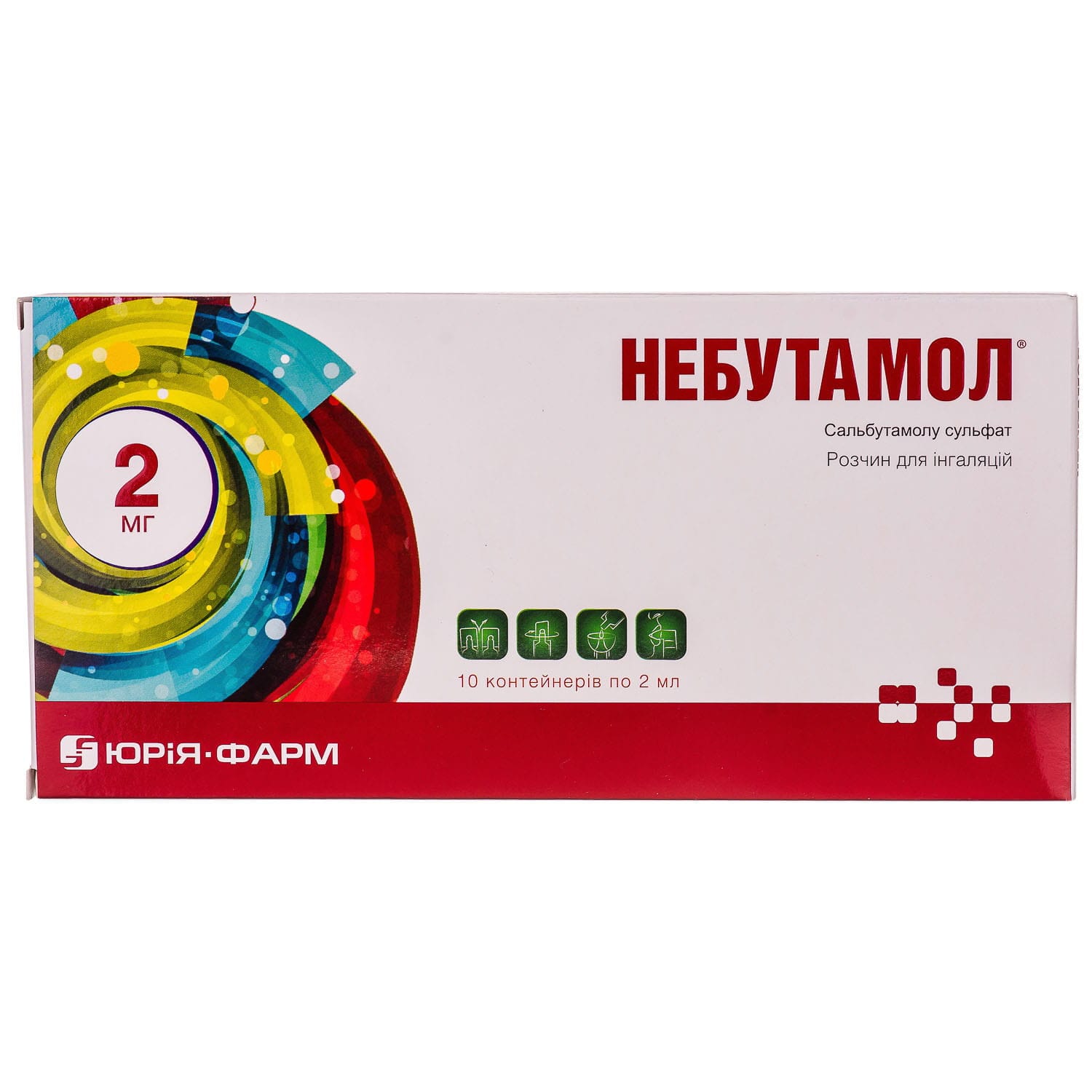
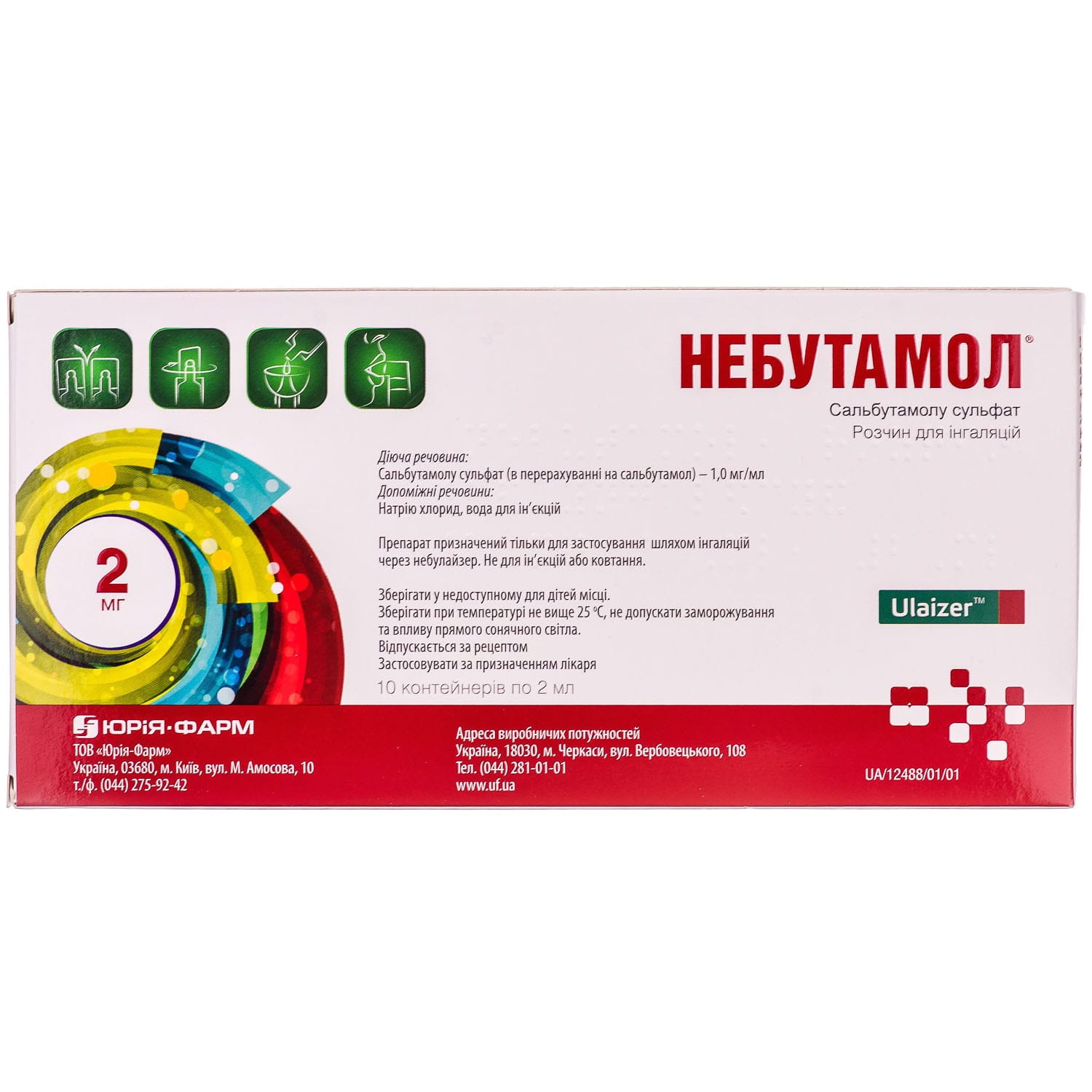

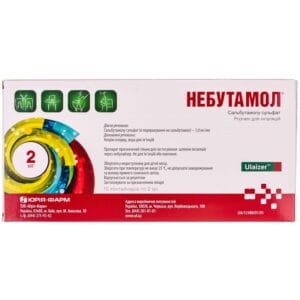
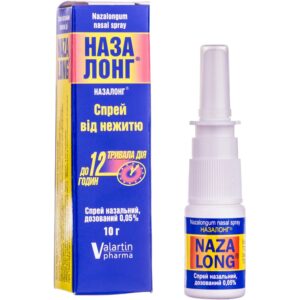
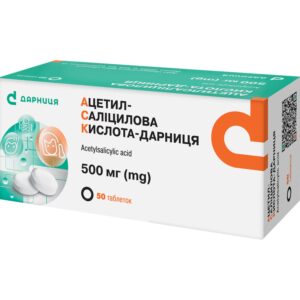

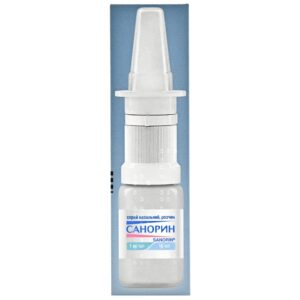
Reviews
There are no reviews yet.